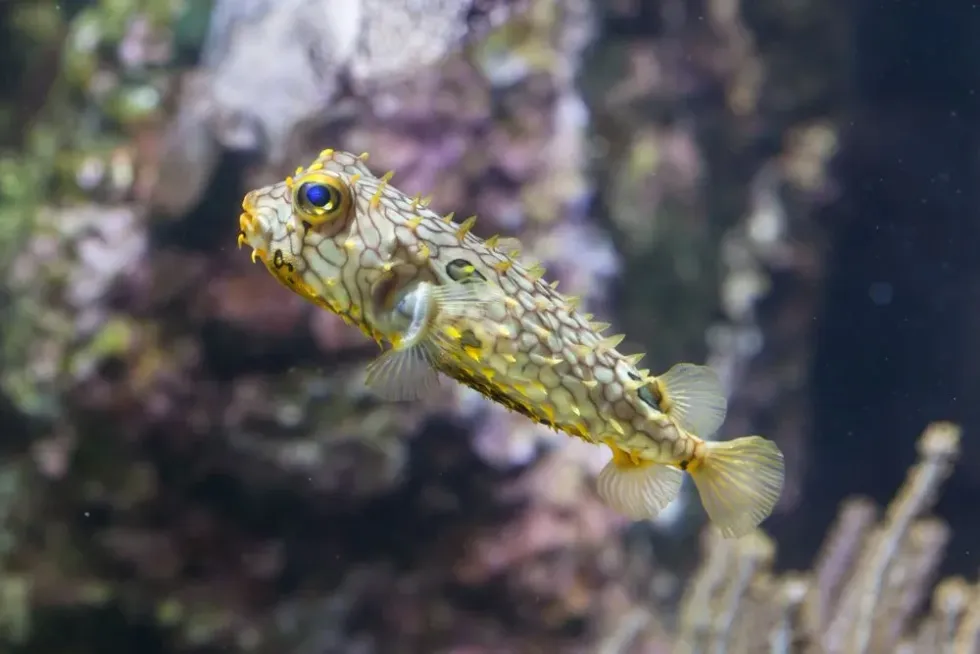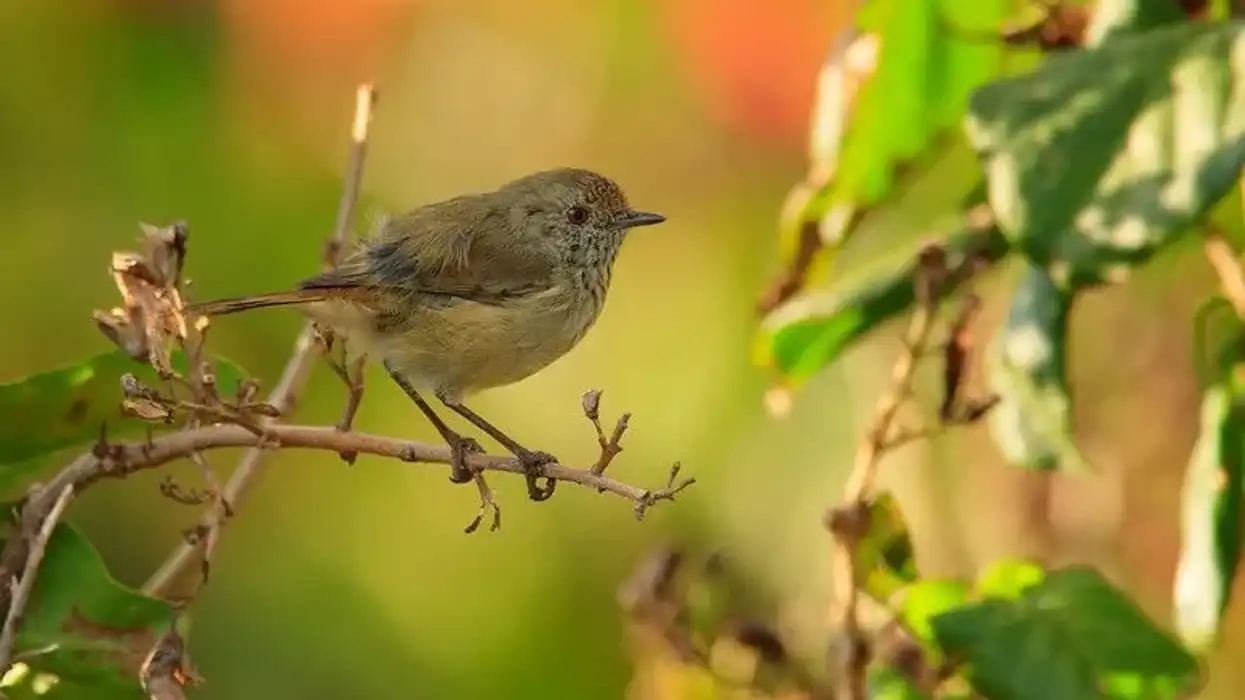There are a total of 120 types of pufferfish in the world. Most of which are found in the tropical and subtropical regions.
The striped burrfish, chilomycterus schoepfii, is a small spiny pufferfish that resembles the porcupinefish. Some species of pufferfish are poisonous while some are not, for example, the northern puffer is not poisonous.
Striped burrfish have sharp spines and are capable of producing a painful bite to humans. When dying they release a toxic chemical in the water body which may impact the health of other aquatic life.
As per the DNR order, people are cautioned against eating these species. They have no specific nutritional value even if they are consumed.
They are primarily seen in rivers and inshore areas. They are captured and sold as pets by anglers. Wearing gloves while handling striped burrfish is essential to avoid injury as well as using a hook while fishing, which is the best way to catch them.
In this article, we will take a look at some fun and interesting facts about the striped burrfish. If you liked this article, check out bonito fish and seahorses.
Striped Burrfish Interesting Facts
What type of animal is a striped burrfish?
The striped burrfish is a type of fish that lives in seagrass beds, reef environments, coastal lagoons, rivers, lakes, and ponds.
What class of animal does a striped burrfish belong to?
Striped burrfish belong to the Actinopterygii class and are classified as of Least Concern in regards to their conservation category.
How many striped burrfish are there in the world?
Striped burrfish are seen in tropical and subtropical regions of the world. The exact number of striped burrfish in the world is not known. There are a total of 120 types of pufferfish in the world. They are also kept as pets in aquariums.
Where does a striped burrfish live?
Striped burrfish live in seagrass beds, reef environments, coastal lagoons, and near bays. They don't live in oceans or larger water bodies. They take in water to inflate themselves into a spike-covered body as a defense mechanism against predators.
What is a striped burrfish's habitat?
Striped burrfish are mostly located in the tropic and subtropical regions. In specific they are seen in the Atlantic Ocean from Brazil to Florida, the Gulf of Mexico, and Florida.
They are also seen swimming in the waters of the Caribbean Sea. They thrive in grass beds, coastal reefs, seagrass beds, reef environments, and coastal lagoons. They exist in waters as deep as 30 to 300ft deep.
Who do striped burrfish live with?
Striped burrfish live by themselves as well as other species of their own kind. They coexist with other marine life. They live in brackish marine environments and within a particular temperature range. Normal temperatures for marine fish are between 74 and 79 degrees Fahrenheit.
How long does a striped burrfish live?
Striped burrfish, chilomycterus schoepfii, have the capacity to live for many years in captivity. This depends on various factors like their diet and their environment. The Greenland shark is the oldest fish ever and it's estimated that it lived for 400 years.
How do they reproduce?
They are oviparous in nature and lay eggs, usually at night. The female lays eggs on the seabed after mating. Once the young ones grow up they leave their nests to live as solitary beings.
What is their conservation status?
Striped burrfish are considered as of Least Concern by the International Union For Conservation Of Nature (IUCN).
Striped Burrfish Fun Facts
What do striped burrfish look like?

*Please note that this is an image of a Spotfin Burrfish, not a Striped Burrfish specifically. If you have an image of a Striped Burrfish, then please let us know at hello@kidadl.com.
Striped burrfish are yellowish-green with dark and wavy stripes and short, sharp spines cover their body. They make use of their sharp spines to avoid getting injured. They have a large pectoral fin however they dont have pelvic fin.
Their pectoral fins do not have sharp spines. They move by undulating or waving their pectoral fin and tails. Its maximum size is about 10 inches.
Their anal fin has 10 rays and dark spots. Their body is covered with short immovable spines.
They have a spherical body and can inflate the body by taking either air or water into their body. Their teeth grow continually and they cannot survive if their teeth are too long. In the wild, striped burrfish use their powerful beak-like jaws to eat and crush and consume their prey.
How cute are they?
They are extremely cute to look at and fend off their predators by puffing their bodies into a spiny ball. They are dangerous if touched and one should wear gloves when touching them to avoid getting bitten.
How do they communicate?
They communicate primarily by electronic signals similar to how dolphins communicate with one another. They also make use of body language to communicate with each other.
How big is a striped burrfish?
Striped burrfish is 13in (33cm) in length which is 20 times bigger than the world's tiniest fish, Paedocypris which is 10.3 mm in size.
How fast can a striped burrfish swim?
Striped burrfish swim at an average speed and are not good swimmers. Their shape helps them swim, however when they puff their body into a spiny ball they are not able to swim instead they float during this time. They are a good addition to an aquarium.
How much does a striped burrfish weigh?
Striped burrfish weigh 1lb which is approximately 0.6kg. They don't grow extremely big in size and hence are perfect for an aquarium. Adults can grow to 12 inches (30cm).
What are their male and female names of the species?
Males and females are not addressed differently, they look more or less similar and differ only in reproductive functions.
What would you call a baby striped burrfish?
Baby striped burrfish are referred to as fry and they are seldom seen. Most striped burrfish are adopted into aquariums when they grow a bit in size.
What do they eat?
Striped burrfish, chilomycterus schoepfi, feed on invertebrates. Their feeding consists primarily of small marine animals. In the wild, striped burrfish use their powerful beak-like jaws to eat, and use their jaws to crush and consume their prey. Their food also consists of invertebrates like hermit crabs, oysters, snails, and barnacles.
Are they dangerous?
They can be dangerous if not handled properly. They fend off their predators by puffing their bodies into a spiny ball to avoid being eaten. They also release toxic chemicals when they are about to die. If touched without gloves they have the ability to bite with their teeth as well as poke with their sharp spines.
Would they make a good pet?
They are taken away primarily to be kept in an aquarium or a fish tank. They are a unique fish species and add aesthetic appeal to all those who are looking at the aquarium or fish tank. You will have to feed them with routine.
Flake food is not recommended for these species. These fish are not sold commercially for food. It is essential to search for adequate information before adopting the same to ensure they are taken care of properly.
Did you know...
Sometimes when striped burrfish are captured in a gill nest, they end up dead in such an instance the fishermen would toss them back into the sea. It is advised to be careful not to step on dead striped burrfish.
While defending themselves the fish inflate themselves and inhale water using their organ called a 'buccal pump' and while catching prey they only hunt at night instead of the daytime.
Why is a striped burrfish called pufferfish?
Burrfish are similar to pufferfish who have the ability to pull water or air into their bodies, expanding far beyond their normal size in an effort to deter predators. The striped burrfish, chilomycterus schoepfii, is a small spiny pufferfish that resembles the porcupinefish. They inflate their bodies to defend themselves from possible prey.
What eats striped burrfish?
Bigger fish might be possible predators to the burrfish however, they instantly puff their bodies and use their sharp spines covered all over their body to save themselves from possible attacks. They have the possibility to release toxic chemicals off their body which are harmful to the health of all who consume it.
While dying they also release chemicals that are toxic for other beings living in the water body or aquarium.
Proper precautions need to be taken if they are kept as pets. If you wish to see these unique beings you too could visit an aquarium where they are kept.
Here at Kidadl, we have carefully created lots of interesting family-friendly animal facts for everyone to discover! Learn more about some other fish including beluga sturgeon and loaches.
You can even occupy yourself at home by drawing one of our striped burrfish coloring pages.










